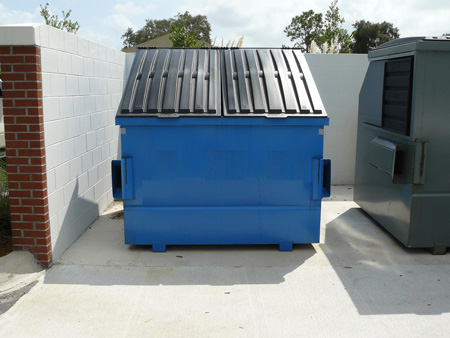Renting a dumpster like a professional requires cautious planning and attention to detail to assure a successful job. To obtain it right, it's essential to pick the right dumpster size, recognizing that little tasks require 10-yard dumpsters, while larger construction tasks need 30-yard ones. Consider rental duration, area, and debris kind to precisely approximate costs, and understand prohibited items to stay clear of charges. Strategically positioning the dumpster and filling it successfully will improve waste removal and maintain your task on course. By following these necessary suggestions, you'll be well on your means to a hassle-free dumpster rental experience, and there's much more to find to assure your project's success.
Choosing the Right Dumpster Size
When undertaking a task that entails significant waste generation, leasing a dumpster is typically a necessary step. The key to a successful dumpster rental experience hinges on choosing the right dumpster size for your certain needs.
A dumpster that is too little can lead to multiple trips to the landfill, resulting in boosted expenses and lost time. On the various other hand, a dumpster that is as well big can be a waste of resources and occupy important area on your job site.
To determine the ideal dumpster size, think about the type and quantity of waste you expect to generate. For example, a small 10-yard dumpster might be suitable for minor renovations or lawn cleanings, while a larger 30-yard dumpster is better matched for bigger building projects or industrial cleanouts.
Additionally, think about any type of certain policies or constraints in your area that may affect the dimension of dumpster you can rent out. By taking the time to pick the best dumpster dimension, you can ensure a smooth and efficient waste management process
Understanding Dumpster Rental Costs
Having chosen the appropriate dumpster size, it's equally crucial to comprehend the expenses associated with renting a dumpster. This will certainly assist you strategy and allocate your job, making sure a smooth and worry-free experience.
Dumpster leasing expenses can vary relying on a number of factors, consisting of:
Rental duration: The longer you need the dumpster, the higher the cost.
Dumpster size: Larger dumpsters call for more materials and labor, causing greater prices.
Location: Rental expenses differ depending on the location, with metropolitan areas usually being a lot more expensive than rural areas.
Debris type and weight: Disposing of heavy or dangerous products may sustain extra fees.
Understanding these elements will assist you make a notified decision when leasing a dumpster.
Be sure to ask your rental company concerning any extra expenses or costs related to your certain task. By doing so, you can avoid unanticipated costs https://canvas.instructure.com/eportfolios/3257024/piedmonttriaddumpsters/Exactly_how_to_Lease_a_Dumpster_in_7_Easy_Actions and stay within your budget.
What Can Go in the Dumpster
Within the boundaries of your rented dumpster, you can take care of a variety of unwanted materials, from household junk to construction debris This consists of old furnishings, home appliances, and electronic devices that are no longer functional or needed.
You can additionally eliminate renovation waste, such as drywall, floor covering, and roofing materials. Furthermore, yard waste like branches, leaves, and lawn trimmings can be taken care of in the dumpster.
If you're cleaning out your attic or basement, you can throw away old boxes, documents, and various other assorted things that are occupying space.
Remember to comply with the guidelines set by your dumpster rental company, as they might have certain regulations regarding what can and can not be positioned in the dumpster.

It's vital to assure that you're only taking care of allowed materials to prevent any kind of extra fees or penalties. By knowing what can go in the dumpster, you can effectively and efficiently do away with unwanted products and declutter your space.
Prohibited Items and Materials
Disposing of unwanted products through a dumpster rental can be a hassle-free and reliable method to declutter your area, however it's essential to understand the prohibited items and materials that can not be positioned in the dumpster.
These products can posture environmental hazards, damage the dumpster, or perhaps jeopardize the safety of those managing the waste.
- Hazardous waste, such as batteries, electronic devices, and chemicals Liquids, including paint, solvents, and fuels Flammable materials, including gas containers and fireworks Large appliances, such as fridges and air conditioners
Strategically Positioning Your Dumpster
Positioning your dumpster in a strategic location is necessary to ensure a seamless waste administration process This ensures easy access for packing and discharging waste, while additionally decreasing disruptions to your everyday activities.
When choosing an area, consider the proximity to the area where waste will certainly be created, such as a building website or a home remodelling location. Additionally, choose a place that is easily available for the dumpster delivery van and has sufficient space to fit the dumpster's size.
Ascertain the location is level, company, and stable to stop the dumpster from changing or toppling over. Avoid putting the dumpster near power lines, water meters, or various other utilities that could be damaged.
Also, talk to your local authorities to determine if any kind of licenses are needed to put a dumpster on your building. By purposefully placing your dumpster, you can guarantee a hassle-free waste management experience and prevent prospective problems or fines.
Efficiently Loading the Dumpster
Once your dumpster is tactically put, it's time to concentrate on effectively loading it. This is vital to making best use of the dumpster's capability and reducing the risk of overfilling or underutilizing the space.

To fill your dumpster like a professional, maintain the complying with tips in mind:
Load heavy things first, such as building and construction particles or heavy furniture, to develop a secure base and prevent moving during transport.
Break down large items, like appliances or big furniture, to maximize the dumpster's space.
Fill in spaces and corners with smaller sized things, like boxes or loose materials, to eliminate lost space.
Keep the dumpster organized by organizing comparable materials with each other, making it simpler to dispose of them properly.